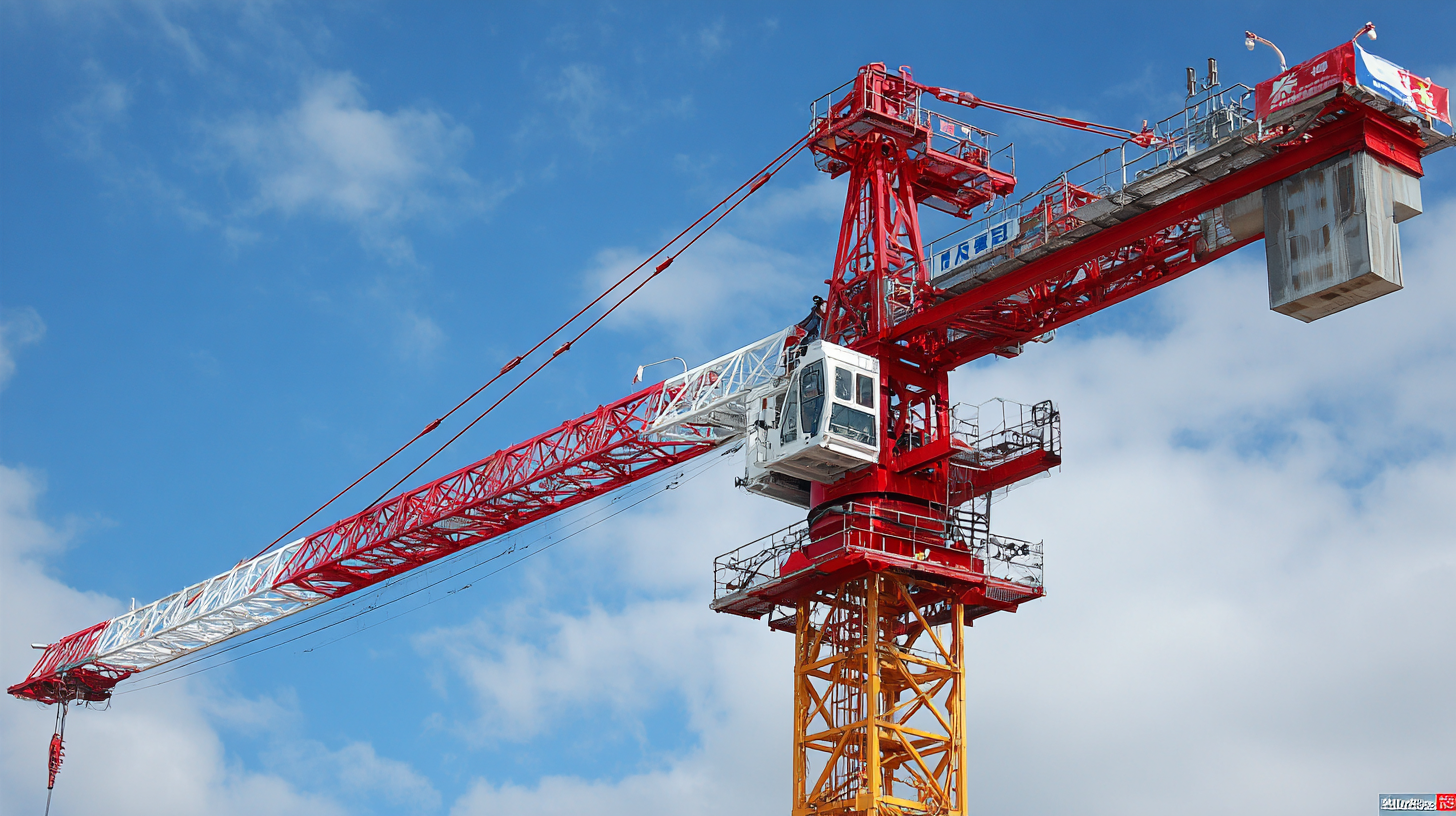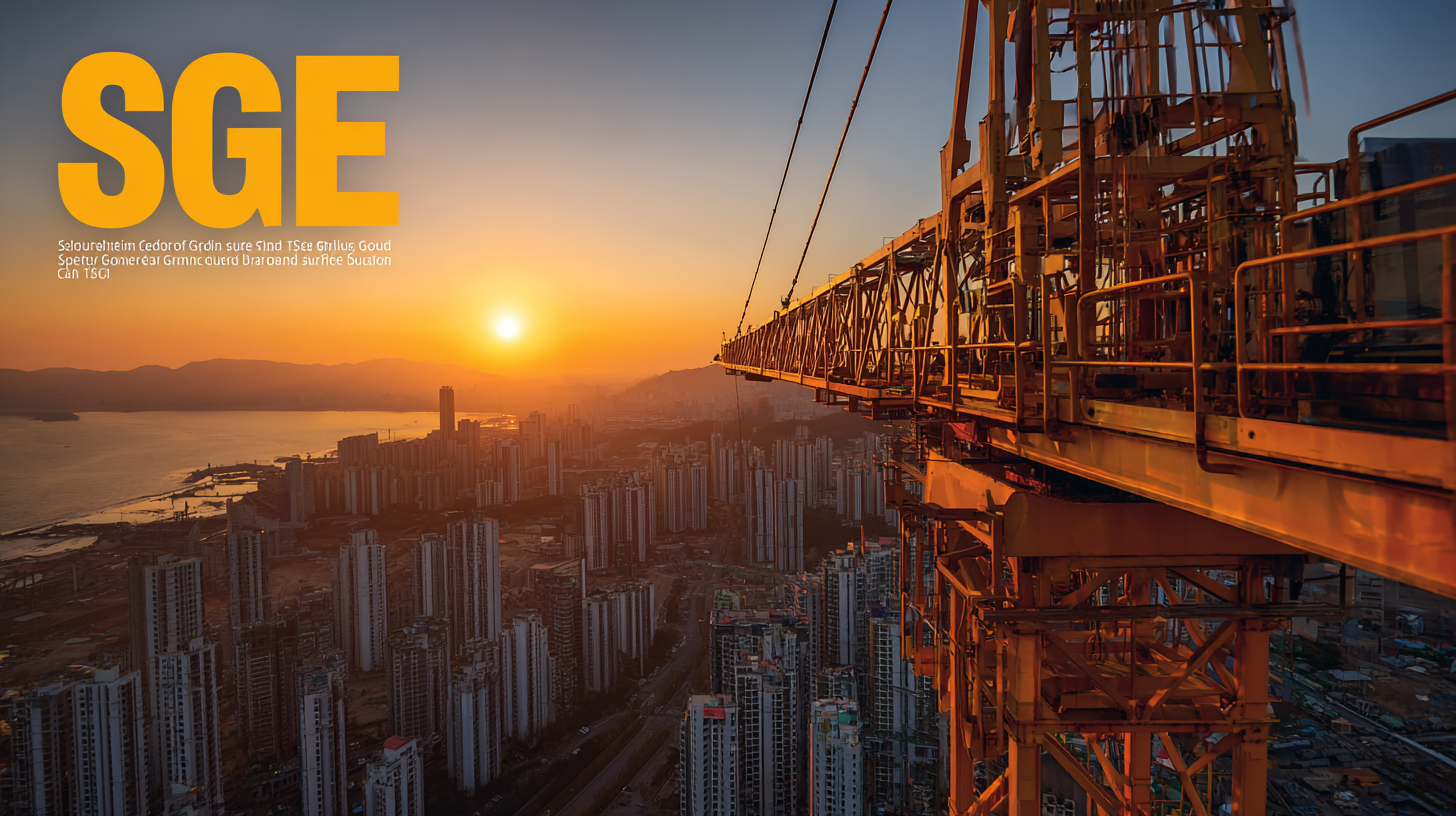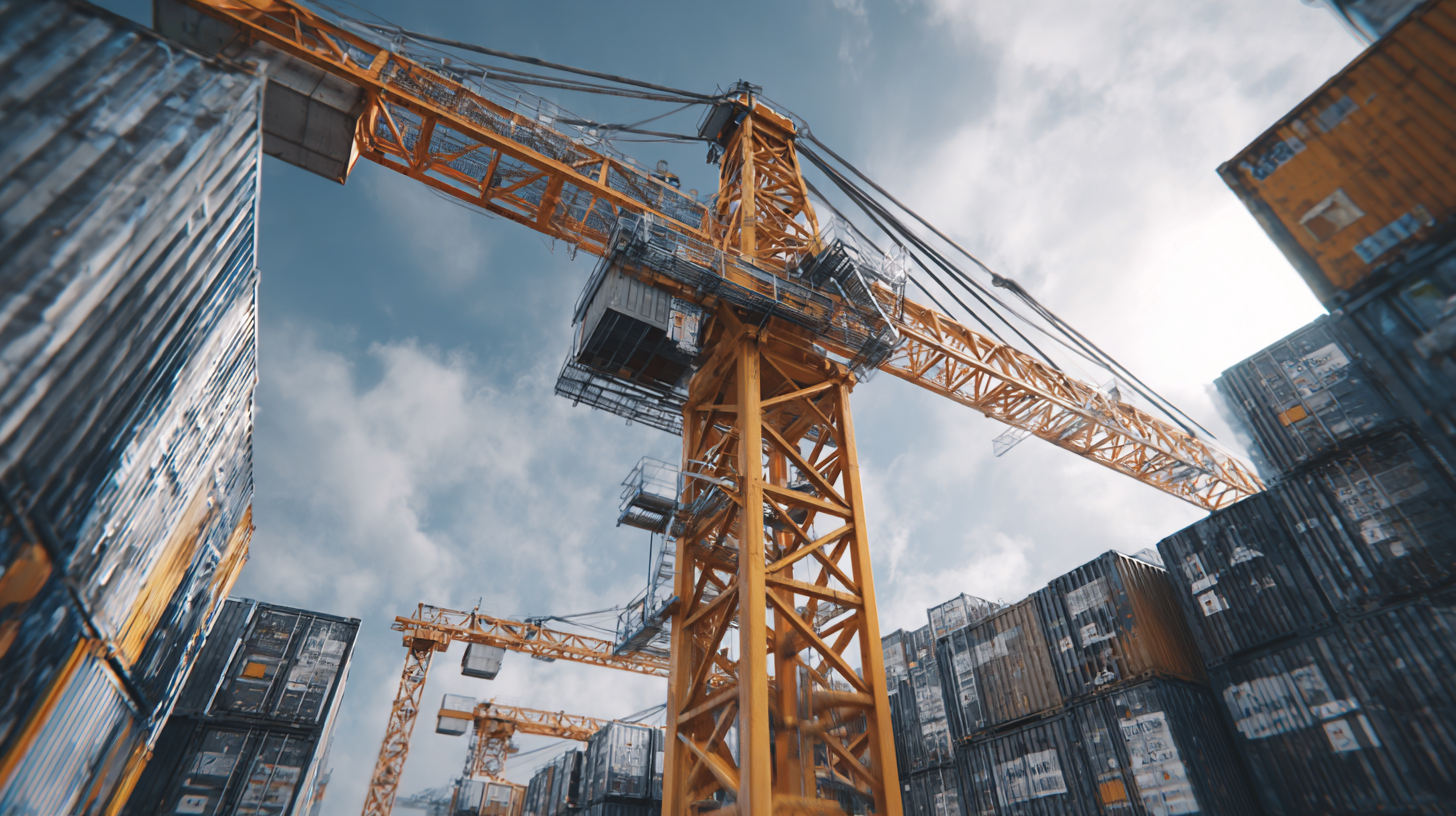 In the ever-evolving landscape of construction machinery, Self Erecting Tower Cranes have emerged as a pivotal innovation, offering unparalleled efficiency and adaptability on job sites. According to a report by ResearchAndMarkets, the global market for tower cranes is projected to grow significantly, reaching approximately $4 billion by 2025, driven by increasing urbanization and infrastructure development. These versatile cranes not only enhance productivity but also reduce labor costs and project timelines, making them a preferred choice for contractors worldwide. As industry demands shift, understanding the latest market trends and the best options available will be essential for construction professionals aimed at optimizing their operations. This guide provides vital insights and practical tips on navigating the complexities of global sourcing for Self Erecting Tower Cranes, ensuring you stay ahead in this competitive field.
In the ever-evolving landscape of construction machinery, Self Erecting Tower Cranes have emerged as a pivotal innovation, offering unparalleled efficiency and adaptability on job sites. According to a report by ResearchAndMarkets, the global market for tower cranes is projected to grow significantly, reaching approximately $4 billion by 2025, driven by increasing urbanization and infrastructure development. These versatile cranes not only enhance productivity but also reduce labor costs and project timelines, making them a preferred choice for contractors worldwide. As industry demands shift, understanding the latest market trends and the best options available will be essential for construction professionals aimed at optimizing their operations. This guide provides vital insights and practical tips on navigating the complexities of global sourcing for Self Erecting Tower Cranes, ensuring you stay ahead in this competitive field.
The demand for self erecting tower cranes is on the rise globally, driven by rapid urbanization and a booming construction industry. The self erecting tower crane market is projected to surge to $1.35 billion by 2031. This impressive growth trajectory highlights their increasing popularity in urban infrastructure projects where space is limited and efficiency is paramount. By 2030, the overall tower crane market is expected to reach a value of approximately $7.5 billion, showcasing a robust interest in various types of cranes including self erecting models.
 Tips for businesses considering investment in self erecting tower cranes include understanding regional market trends and the technological advancements in crane design. Opting for cranes that offer quick setup times and versatility can significantly enhance project efficiency. Additionally, as demand grows for cranes that can lift larger loads, it’s crucial to evaluate the capacity and durability of the equipment to ensure it meets the needs of high-rise construction projects.
Tips for businesses considering investment in self erecting tower cranes include understanding regional market trends and the technological advancements in crane design. Opting for cranes that offer quick setup times and versatility can significantly enhance project efficiency. Additionally, as demand grows for cranes that can lift larger loads, it’s crucial to evaluate the capacity and durability of the equipment to ensure it meets the needs of high-rise construction projects.
Furthermore, staying informed about market forecasts and industry insights can provide a competitive edge. The latest research indicates that urbanization and infrastructure development heavily influence crane demand, with projections showing steady growth from 2025 to 2035 in the overall market. Companies should leverage this data to make informed decisions that align with current and future market needs.
When selecting the best self-erecting tower cranes, it's essential to consider several key features that can significantly impact your project’s efficiency and safety. Firstly, the crane's lifting capacity and maximum height are paramount. Ensure that the chosen crane can handle the specific weights and heights required for your construction projects. In addition, the crane's setup time and ease of operation can greatly affect productivity on site, so prioritize models designed for quick assembly and user-friendly controls.
Another critical area to focus on is stability and safety features. Self-erecting cranes often operate in varying site conditions, making features like automatic leveling systems and robust counterweights essential. These elements not only enhance the crane's stability but also ensure adherence to safety regulations during operation.
Lastly, consider the manufacturer's track record and support services. A reputable manufacturer will offer good after-sales support, maintenance services, and readily available spare parts, which can be vital for minimizing downtime. Investing in a reliable self-erecting tower crane can lead to significant long-term benefits, including improved efficiency and enhanced project success rates.
This chart illustrates key features to consider when choosing the best self erecting tower cranes in terms of load capacity, maximum height, deployment time, and operating radius. Each bar represents the value of that feature in a scale that reflects industry standards.
The self-erecting tower crane market is witnessing significant growth, highlighted by the latest trends and innovations from major manufacturers. In 2023, several key players dominate the landscape, driving advancements in technology and efficiency. These manufacturers are focused on enhancing operational capabilities and minimizing downtime, which is crucial for meeting the increasing demands in construction and other related industries.
The global tower crane market offers various types, including hammerhead cranes, flat top cranes, luffing jib cranes, and self-erecting cranes, each catering to specific project requirements. The self-erecting crane segment stands out due to its ability to set up quickly and operate efficiently in limited spaces, making it a preferred choice for urban construction projects. As the market is projected to grow significantly, especially in regions like China where opportunities abound despite challenges, the focus remains on strategic partnerships and rental markets to maximize outreach and service capabilities.
| Model | Max Load (ton) | Height (m) | Jib Length (m) | Power Source | Market Share (%) |
|---|---|---|---|---|---|
| Model A | 8 | 30 | 30 | Electric | 25 |
| Model B | 10 | 35 | 32 | Diesel | 30 |
| Model C | 12 | 40 | 35 | Hybrid | 20 |
| Model D | 15 | 45 | 40 | Electric | 25 |
| Model E | 20 | 50 | 50 | Diesel | 20 |
As global sourcing in the construction equipment sector evolves, several emerging trends are reshaping the landscape. One of the key influences is the increasing focus on sustainability and innovation. Engineering and construction firms are recognizing that incorporating eco-friendly materials and practices not only meets regulatory demands but also appeals to environmentally conscious clients.
This shift is driving companies to invest in advanced technologies such as automation and data analytics, which enhance operational efficiency while reducing carbon footprints.
Moreover, market volatility due to potential tariffs and policy changes is compelling firms to adopt strategic approaches to mergers and acquisitions. By consolidating resources and knowledge, companies can position themselves more competitively on a global scale.
The digital transformation initiated by the integration of technologies like IoT and blockchain further facilitates better supply chain management, making it imperative for businesses to stay ahead of these trends.
Organizations that successfully navigate these complexities will be better positioned to leverage new opportunities and ensure resilience in an unpredictable market.
 When navigating the global sourcing of tower cranes, one of the foremost challenges faced by companies is understanding and complying with regulatory requirements. Different countries impose various standards, certifications, and safety protocols that can be daunting without proper guidance. It is crucial for businesses to conduct thorough research on the regulations governing the import and use of tower cranes in their target markets. This ensures compliance and avoids potential legal issues that can arise from negligence.
When navigating the global sourcing of tower cranes, one of the foremost challenges faced by companies is understanding and complying with regulatory requirements. Different countries impose various standards, certifications, and safety protocols that can be daunting without proper guidance. It is crucial for businesses to conduct thorough research on the regulations governing the import and use of tower cranes in their target markets. This ensures compliance and avoids potential legal issues that can arise from negligence.
Tip: Establish relationships with local regulatory bodies to stay informed about any changes in laws or requirements that could affect your sourcing decisions. Having a local expert can also help interpret regulations and facilitate smoother processes.
In addition to regulatory compliance, businesses must also navigate the complexities of international trade policies, tariffs, and import duties. These factors can significantly influence sourcing costs and timelines. Understanding the trade environment of your sourcing regions is essential for making informed decisions.
Tip: Regularly assess the economic and political landscape of the countries you are sourcing from. This can help you anticipate changes that may impact your supply chain and adjust your strategies accordingly for better resilience.
